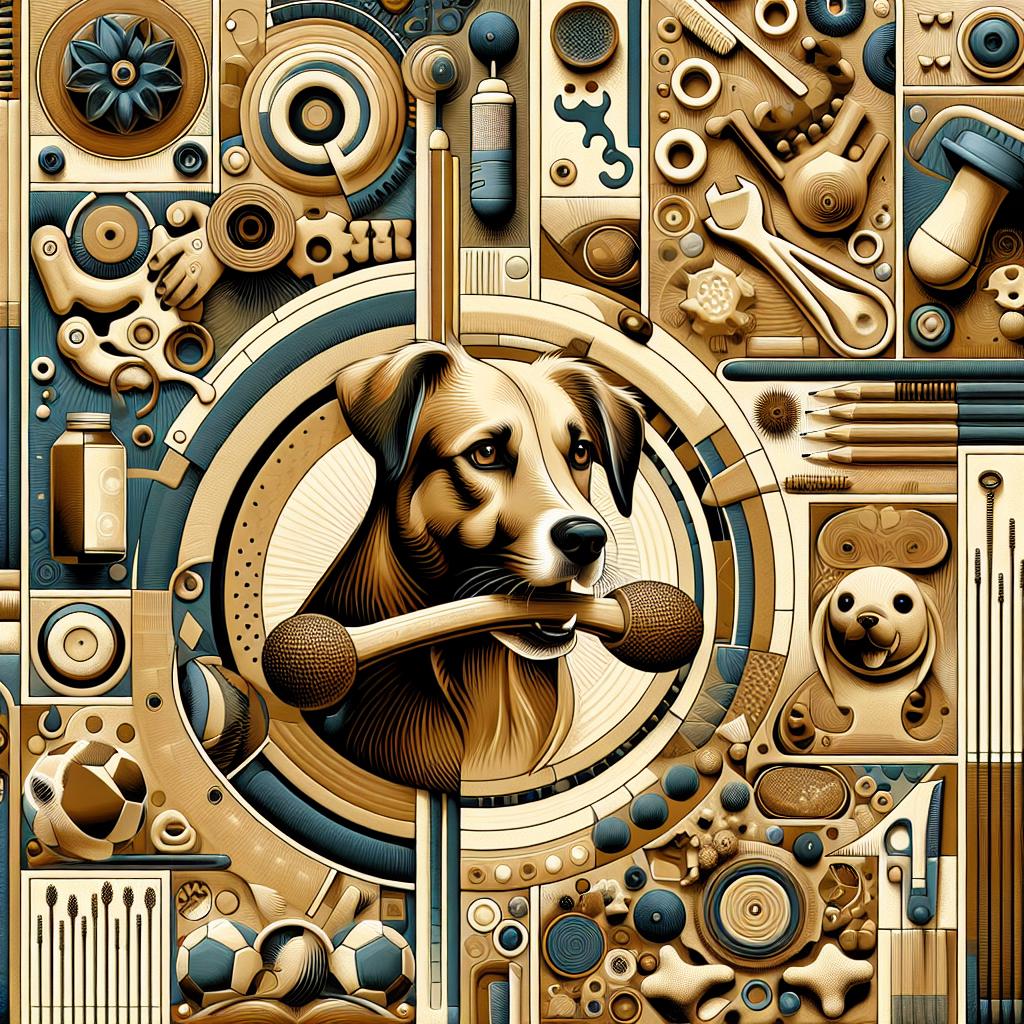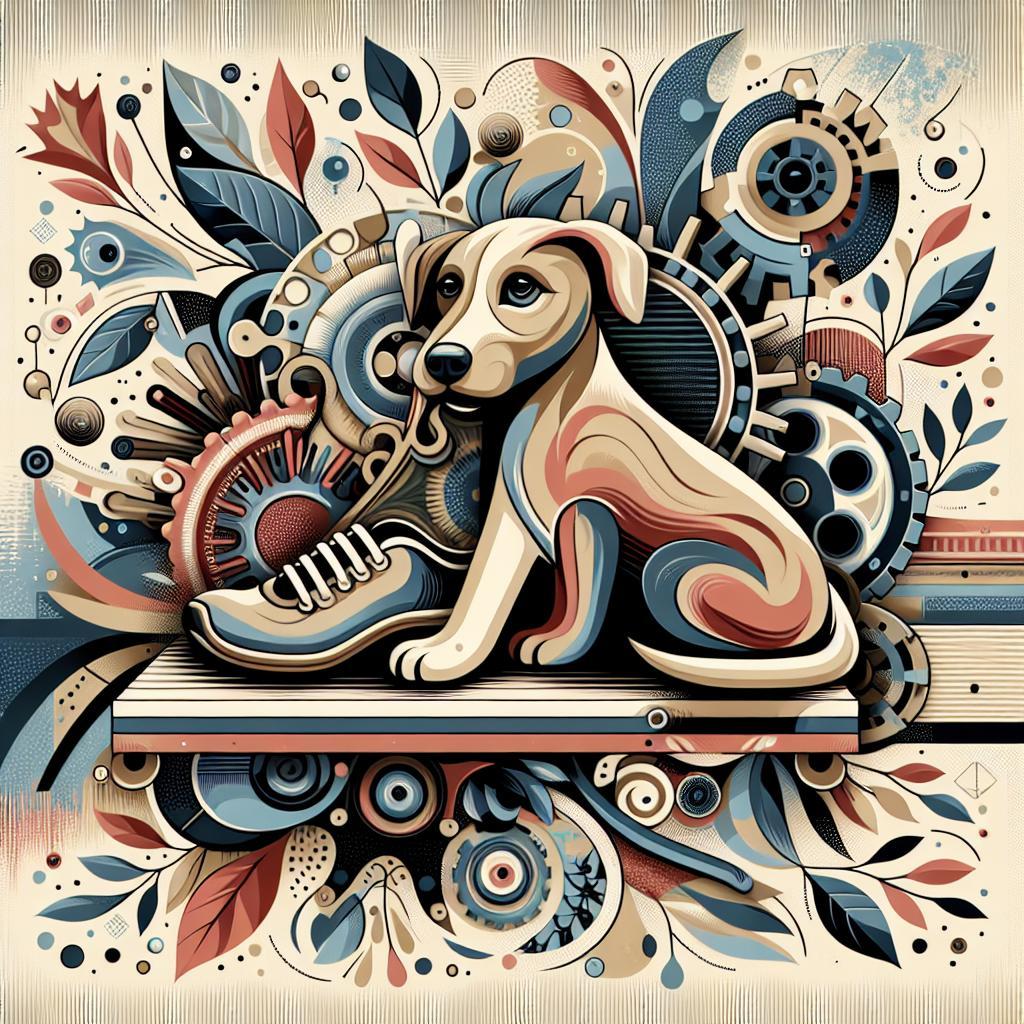Title: Unraveling the Mystery: How to Train Your Dog to Stop Chewing Household Items
Introduction:
Every dog owner knows the look—the innocent eyes peering from behind a pile of shredded cushions or a half-devoured shoe.While our furry friends are often a source of laughter and joy, their mischievous chewing habits can quickly transform beloved items into remnants of destruction. But fear not! Training your pup to curb their chewing urges is not only possible, but it can also be an enjoyable journey for both pet and owner. In this article, we will explore effective strategies and techniques to redirect your dog’s chewing tendencies from your prized possessions to appropriate toys, ensuring peace of mind at home and a happier, healthier pup. Whether you’re a seasoned dog trainer or a first-time pet parent, the path to a chew-savvy canine is just a few steps away. Let’s embark on this journey together!
Understanding the Root Causes of Destructive chewing
Destructive chewing in dogs can often stem from a variety of root causes that need to be addressed to effectively manage the behavior. Understanding these triggers can considerably aid in training. Some common reasons include:
- Boredom: Dogs, especially active breeds, require mental and physical stimulation. Without sufficient outlets, they might resort to chewing as a way to entertain themselves.
- Anxiety: Separation anxiety or fear of loud noises can lead a dog to chew destructively, seeking comfort through this behavior.
- <strong teething: Puppies, much like human infants, experience discomfort during teething, which can lead them to chew anything within reach.
- Curiosity: Dogs explore their environment with their mouths. Inquisitive pups may chew household items out of sheer curiosity.
Identifying these underlying factors is crucial for effective intervention. To help you assess your dog’s chewing behavior, consider the following table that outlines potential causes and suggested solutions:
| Cause | Solution |
|---|---|
| Boredom | Increase playtime and provide interactive toys. |
| Anxiety | Implement calming methods and gradual desensitization. |
| Teething | Offer designated chew toys specifically for teething pups. |
| Curiosity | Redirect attention with appropriate toys and supervision. |

Effective Strategies for Redirecting Chewing Behavior
Redirecting your dog’s chewing behavior can be achieved through a combination of positive reinforcement and providing appropriate alternatives. It’s essential to understand what motivates your dog to chew, whether it’s boredom, anxiety, or teething. Choosing the right toys can significantly influence their chewing habits. Here are some effective alternatives to entice your furry friend:
- Durable Chew Toys: Invest in tough, long-lasting toys designed for aggressive chewers.
- Interactive Puzzle Toys: These not only provide chewing satisfaction but also engage your dog’s mind.
- Rawhide and Natural Chews: Ensure these are sourced from reputable suppliers to avoid health issues.
Moreover,creating an environment that discourages chewing on household items is vital. Training your dog to associate their designated toys with positive experiences can further shift their behavior. Consider employing the following measures to control your dog’s chewing impulses:
| Strategy | Description |
|---|---|
| Set Boundaries | Use baby gates or playpens to limit access to prohibited areas. |
| Provide Chew Schedules | Establish specific times for chewing sessions with toys to instill a routine. |
| Utilize Deterrents | Apply safe, bitter-tasting sprays on items you want to protect. |

Creating a Chew-Friendly Environment for Your Dog
Creating a dog-friendly atmosphere in your home is essential for protecting your belongings while ensuring your furry friend has a safe space to express their natural chewing instincts.Here are some simple steps to make your environment more accommodating:
- Designate Chew Zones: Set aside specific areas in your home where your dog can chew freely. Use pet-friendly mats or blankets to define these spaces.
- Provide Appropriate Chew Toys: Stock up on a variety of durable chew toys that are specifically designed for dogs. Rotate these toys regularly to keep your dog interested.
- Use Deterrents: Apply pet-safe deterrent sprays to items you want to protect, teaching your dog that these are not meant for chewing.
Pay attention to your dog’s preferences and chewing habits, as this will help you understand what toys or chews might engage them the most. Consider these options:
| Type of Chew Toy | Benefits |
|---|---|
| Rope Toys | Great for interactive play and dental health. |
| chew Bones | Promotes strong jaws and keeps them busy. |
| Soft Plush Toys | Perfect for cuddling and gentle chewing. |
Positive Reinforcement Techniques to Encourage Good Habits
Using positive reinforcement techniques is one of the most effective ways to help your dog develop better habits. when your furry friend refrains from chewing on household items, make it a point to reward them immediately. This could involve giving them a treat, praising them with a cheerful “Good boy!”, or even spending a few minutes engaging in their favourite game. Consistency is key; ensure you recognize and reward their good behavior every time, which reinforces the idea that they will receive positive outcomes for appropriate actions.
incorporating a fun and engaging training schedule will also aid in establishing good habits. Consider creating a training plan that outlines specific times to practise commands such as “leave it” or “no chew.” You’ll want to keep the sessions short to maintain your dog’s interest. track their progress on a simple chart like the one below:
| Day | command Practiced | Positive Reinforcement Given |
|---|---|---|
| Monday | Leave it | Cheese treats |
| Wednesday | No chew | Playtime |
| Friday | Drop it | Praise and petting |
By maintaining a focused and rewarding approach, you will not only curb your dog’s chewing habits but also strengthen the bond between you both.
Q&A
Q&A: how to Train Your Dog to Stop Chewing Household Items
Q1: Why does my dog chew on household items?
A: Chewing is a natural behavior for dogs. They explore their world through their mouths, and sometimes, the allure of your shoes or furniture is just too tempting! Dogs may chew for various reasons, such as boredom, anxiety, teething, or simply out of curiosity about their environment.
Q2: What signs indicate my dog is bored or anxious?
A: Signs of boredom may include excessive energy, destructive behaviors (such as chewing), or restless pacing. Anxiety can manifest as whining, pacing, or excessive chewing, especially when left alone. If your dog seems agitated or fidgety, he might be trying to cope with stress or lack of stimulation.
Q3: How can I redirect my dog’s chewing habit?
A: Providing appropriate chew toys is essential. Choose toys that are durable and engaging to redirect your dog’s attention. Whenever you catch your dog chewing on an inappropriate item, calmly guide them to their designated chew toys. Reward them with praise or treats when they choose the right items!
Q4: Are there specific training techniques I should use?
A: Yes! Positive reinforcement is key. Use commands like ”leave it” or “no,” but always follow up with praise or treats when your dog complies. Consistency is crucial,so ensure everyone in your household follows the same training strategies.
Q5: What should I do if my dog continues to chew despite my efforts?
A: If you’re struggling to curb the behavior, consider increasing your dog’s physical exercise and mental stimulation. Daily walks, interactive games, and puzzle toys can definitely help reduce boredom and anxiety. If the chewing becomes excessive or destructive, consulting a professional dog trainer or behaviorist may provide additional strategies tailored to your pup’s needs.
Q6: Can I use deterrent sprays or products?
A: Deterrent sprays can be effective. These products are designed to taste bitter or unpleasant, discouraging your dog from chewing on specific items.However, these should not be relied upon entirely. It’s best to combine them with positive reinforcement and proper training methods.
Q7: How long will it take to see results?
A: Every dog is different, so the time it takes to break a chewing habit can vary. With consistent training and positive reinforcement, you should start to see improvements within a few weeks. Patience is key—continue to provide guidance, and don’t lose hope!
Q8: Are there chew-proof furnishings I should consider?
A: While no furniture is truly “chew-proof,” selecting durable materials can be beneficial. Look for options made from leather, metal, or tightly woven fabrics. Additionally, using slipcovers or protective sprays can help safeguard your belongings even further.
Q9: Will my dog ever completely stop chewing?
A: Chewing is an innate behavior that may never disappear entirely, but with training and redirection, your dog can learn to chew on appropriate items instead! Think of it as channeling their natural tendencies in ways that are acceptable and safe for your home.
Q10: What’s the most vital takeaway for training my dog?
A: The key is consistency, patience, and positive reinforcement. Understand your dog’s needs, provide plenty of appropriate outlets for their chewing instinct, and reinforce good behavior. With your guidance, your furry friend can become a well-mannered member of the family who knows what belongs to them!
Closing Remarks
transforming your dog’s chewing habits from destructive to delightful is a journey that demands patience, consistency, and a sprinkle of creativity. By understanding the reasons behind their chewing, providing appropriate alternatives, and maintaining a structured training approach, you can foster a peaceful coexistence between your furry friend and your beloved household items. Remember, every pup is unique, and what works for one may not work for another. be attuned to your dog’s needs and adjust your strategies as necessary. Armed with the right tools and techniques,you can guide your canine companion toward better chewing choices,ensuring a harmonious home where both pets and possessions thrive. Here’s to nurturing a strong bond with your dog—one chew toy at a time!

